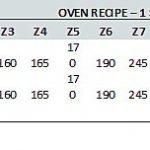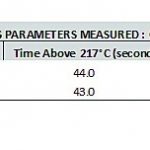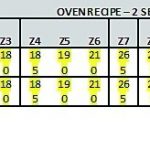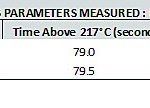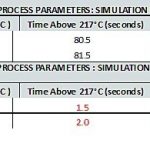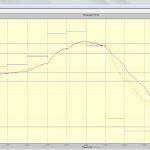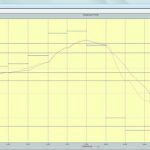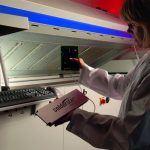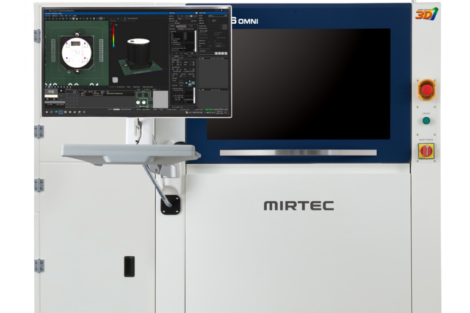To produce electronic PCB assemblies without a known thermal profile is detrimental, as you “cannot manage what you do not measure’. Without an verified and established oven profile, problems can occur with soldering quality, cleaning issues or further down the line involving either rework costs or early component failures, a major flaw in the manufacture of demanding PCB assemblies. Two novel tools with sophisticated and proven modeling features help users to find the optimum solution.
Mark Stansfield, Managing Director, SolderStar
A poor thermal profile can be one of the main factors contributing to manufacturing defects within reflow soldering. Setting up profiles for each batch of electronic assemblies can be a time-consuming exercise without the right engineering tools, especially when assemblies comprise of large thermal mass differences or when we have ovens with a higher number of zone counts. To help combat this problem, profile prediction tools have been developed to simulate the reflow process allowing ‘what if’ scenarios to be performed. Today advanced profilers and software which provides reflow optimization have changed the face of electronic assembly by improving process efficiency.
Smart devices increased the need for intelligent profiling
Consumer electronic goods are following the trends of increased functionality, while physical constraints remain fixed (reduced space, weight or volume requirements). Or in the case of emerging sectors like wearable ‘gadgets’, new manufacturing methods and material are required for ultra-miniature high technology assemblies. To help in this growing sector, the need for proficient measurements, combining optimal profile setup and 100 % monitoring of every assembly through the production line is of high importance.
Continuous development for newer technology requires successful PCB assembly but this in turn increases the number of defects. It is very important to achieve good thermal equilibrium across the whole board especially with lead-free soldering since the peak temperature window is narrower. The need to analysis and improve on performance is becoming an uncompromising requirement, but to achieve this, reflow profile optimization is needed.
The increased need for high-quality yield of PCBs lead to the development of equipment that could read true profiles. Since an advanced reflow oven has different temperature zones and a variety of conveyor speeds supporting literally hundreds of millions of different oven setups, modern process setup tools are needed to identify the best combination.
Complex PCBs also feature differing thicknesses and component densities, usually demanding different profiles. By optimizing a thermal profile of the new assembly you can be sure that thermal requirements are correct, leading to less failures. Without the thermal profile of the new assembly, there is no proof that the recipe settings are sufficient.
Profile prediction radically simplify oven setup
Successful reflow soldering is key to productivity and profitability, yet many assemblers are still using a non-optimized reflow profile. UK-based specialist company SolderStar is changing this mind-set with the introduction of a number of methods to measure profile optimization.
There are currently two systems in place that offer measurement control. The first being the standard ProfileSeeker which allows off-line evaluation of heater and conveyor speed changes to be made. The utility can save time and money by removing the need to make numerous unnecessary profile runs when a new profile is set-up from scratch, for example when moving to or evaluating a lead-free paste, or if an existing profile is being optimized.
The system shows the effect on the profile by drawing a predicted profile alongside the existing one and also uniquely displays graphically the effect on key process parameters. It is a very powerful method, however, with so many variables in today’s soldering processes finding the optimum profile can be difficult unless it is very near completion, in answer to this the tool AutoSeeker was developed.
AutoSeeker searches millions of reflow oven set-point possibilities to find the best suited process settings for these sensitive assemblies. When combined with automatic profiling systems, like the new SolderStar APS, it provides a powerful combination of optimal profile setup and 100 % monitoring of every assembly through the production line and saves time and money by eliminating the trial-and-error approach of reflow process optimization.
The tool uses a sophisticated rules-based algorithm to search for the best machine settings to optimist the reflow profile. User criteria such as process window centered, fastest throughput or lowest running cost can be defined allowing AutoSeeker to streamline product introduction and save money by fine tuning the process to reduce scrap, rework and energy costs.
Reduced oven recipes and faster changeovers
One of the other major uses of profile simulations is the need to reduce the number of oven recipes being used on the SMT line. Ovens can be slow to stabilize when heater changes are required, sometimes taking 30 minutes to come down in temperature before production can begin again.
Recipe harmonizing is also desirable for the engineers, allowing groups of similar assemblies to be processed on the same oven setting successfully. A compromise on absolute optimum settings can still yield processes well within specification and radically reduce changeover time. Another common requirement is to find a suitable profile which only requires a conveyor speed change. Speed changes are almost instant, so to find a suitable profile using the same oven heater settings, but with a subtle speed change is highly desirable. The correct software tools allow both of the above to be achieved, the tools cannot solve the ‘impossible process’, but where assemblies are not varying wildly with shape, size or weight, rationalized production settings can quickly be found. The AutoSeeker tool has options to constrain the optimizer to, for example, only look for solutions that require speed to change. Individual heaters can also be ‘pinned’ so that preferred profile shapes can be maintained.
How do these systems work?
A common question that is asked is ‘How can you possibly know an oven’s performance?. ‘The answer is we don’t, we always need to make an initial measurement from the machine using traditional profiling methods. Once we have this data and the inputted set-points we have everything we need to simulate the effect of changes to the heaters or speed. On early SolderStar software we used a simple time constant approach, ‘borrowed’ from the electronics world of simulating a capacitor charging through a resistor. This simplistic method provided results which were useful but not accurate by today’s standards.
For automatic profile simulation we needed more accurate modeling of the process. SolderStar’s latest algorithm uses complex functions which more closely models heat transfer characteristics and yields more accurate profile results. Our profile optimization engine is extremely innovative, employing novel techniques for solving this complex problem and was developed in conjunction with mathematicians and experts from this domain of techniques. This collaboration provided AutoSeeker with a more accurate prediction model and powerful search tool that rapidly drives to an optimum profile.
The search engine offers stimulus to the profiling prediction model and determines if an improvement has been made. Using this goal-based approach allows the software to drive in the direction of the optimum profile available within the constraints of the process.
The second most common topic of discussion is “how accurate is the simulated profile?” My answer is ‘extremely accurate’, although it is only as good as the quality of the data you enter into the system. It is important to capture well aligned temperature profile data, which is a simple task given the tools in our software.
But “how can you determine it is actually correct?” This procedure is quite simple, it can be easily done in three steps as an exercise.
- Enter a chosen recipe into the oven, allow it to stabilize. Capture a temperature profile from a chosen assembly.
- Enter a 2nd recipe into the oven, allow it to stabilize. Capture a temperature profile from the same assembly.
- Now enter the differences from recipe 1 and recipe 2 into the simulator software and see what it predicted.
- The perfect system would yield a result of the real profile captured in step 2 and the predicted profile from step 3. In reality this is not possible due to noise in the system and other mathematical assumptions, but we can get very close, and certainly near enough to make the exercise a massive time-saver.
- Using this method of measuring two real thermal profiles and comparing the results with what the simulator software predicted allows us to gain a measure of how accurate the model works. As with all mathematical models that are using real world data, with measurement tolerances and noise present within the system, some errors will occur. The results show that with even a considerable change of temperature of 20 °C across all heated zones the simulation algorithm provides extremely accurate answers.
Finding the answer
A 9 zone oven has 10 million possible combinations of zone set-point possibilities, plus limitations and constraints, the problem of finding the best recipe is a complex one. The AutoSeeker software can drive through these possibilities with speed, presenting set-point scenarios to the prediction model and find improved profiles in less than 30 seconds using normal computing power of a desktop PC.
What must be remembered is there is no universal best profile. It cannot be determined by the paste, PCB assembly or reflow oven, it is a combination of all of these and this is why software that automatically drives and predicts an optimal solution for an individual profile is important. It not only saves money through reducing downtime by running off-line set-up, but it also reduces unnecessary profile runs for set-up and fine tuning. Evaluation can be easily made and optimization to improve the process can be simply achieved.
As we can see from the aforementioned, the growth of miniaturization has boosted the manufacturing of fragile and sophisticated electronics, but with it has brought serious profiling problems. By installing software to predict reflow oven optimization, manufacture of those micro-assemblies can be achieved quickly and cost effectively.
productronica, booth A4-240
Share:



